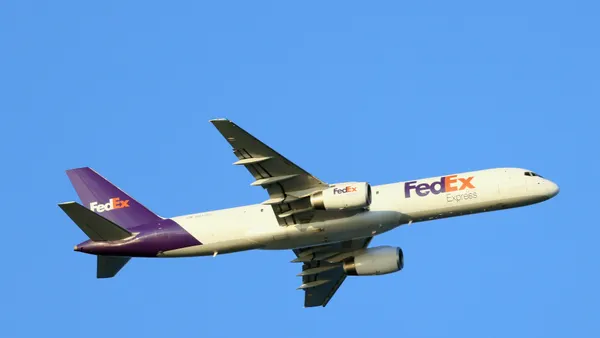Dive Brief:
- The USPS has announced that postage increases of up to two percentage points above inflation will now be allowed, the Wall Street Journal reported.
- The proposal by the the Postal Regulatory Commission allows the increase on first class mail, while magazines and catalogues could increase more.
- The USPS delivered 58.75 billion pieces of first-class mail in 2016, a significant decline since from 2007, when it delivered 95.9 billion pieces.
Dive Insight:
At first glance the USPS plan seems counterintuitive. Price increases haven't boosted USPS revenue sufficiently to make up for first-class mail's fall in volume as a result of email and other technology-based communication. Groups like the Coalition for a 21st Century Postal Service, which includes members such as Amazon and Bank of America, believe that the USPS plan is a poor one, and that even more mail business may be lost as a result.
Postmaster General Megan Brennan, for example, wants price caps dropped instead. Retirement benefits for former postal workers should be shifted to Medicare, she said, which would alleviate the revenue pinch.
"We adjust our prices once a year so the price changes announced last fall to take place in January are the only ones currently planned," said David Partenheimer, Public Relations Manager at the USPS.
Proposed postage rate increases
| Product | Current | Proposed |
|---|---|---|
| Letters | 49 cents | 50 cents |
| Large letters | 21 cents | 21 cents |
| Outbound int'l letters | $1.15 | $1.15 |
| Domestic postcards | 34 cents | 35 cents |
| Small flat rate box | $7.15 | $7.20 |
| Medium flat rate box | $13.60 | $13.65 |
| Large flat rate box | $18.85 | $18.90 |
| APO/FPO large flat rate box | $17.35 | $17.40 |
| Regular flat rate envelope | $6.65 | $6.70 |
| Legal flat rate envelope | $6.95 | $7.00 |
| Padded flat rate envelope | $7.20 | $7.25 |
According to Partenheimer, the greatest increases awaiting customers equal five cents per package.
The USPS is succeeding at a variety of initiatives to modernize itself, including next day and Sunday deliveries, self-driving trucks and reduction goals for Scope emissions while adding sustainable procurement clauses to its best practices guide.
But raising prices above inflation could backfire, especially given the UPS example — retailers shipping through UPS are doing their best to offset the peak season surcharges for consumers, so price hikes could drive consumers away from their local post offices.













